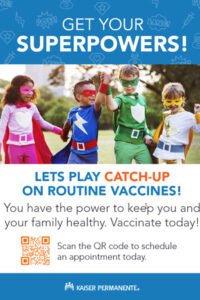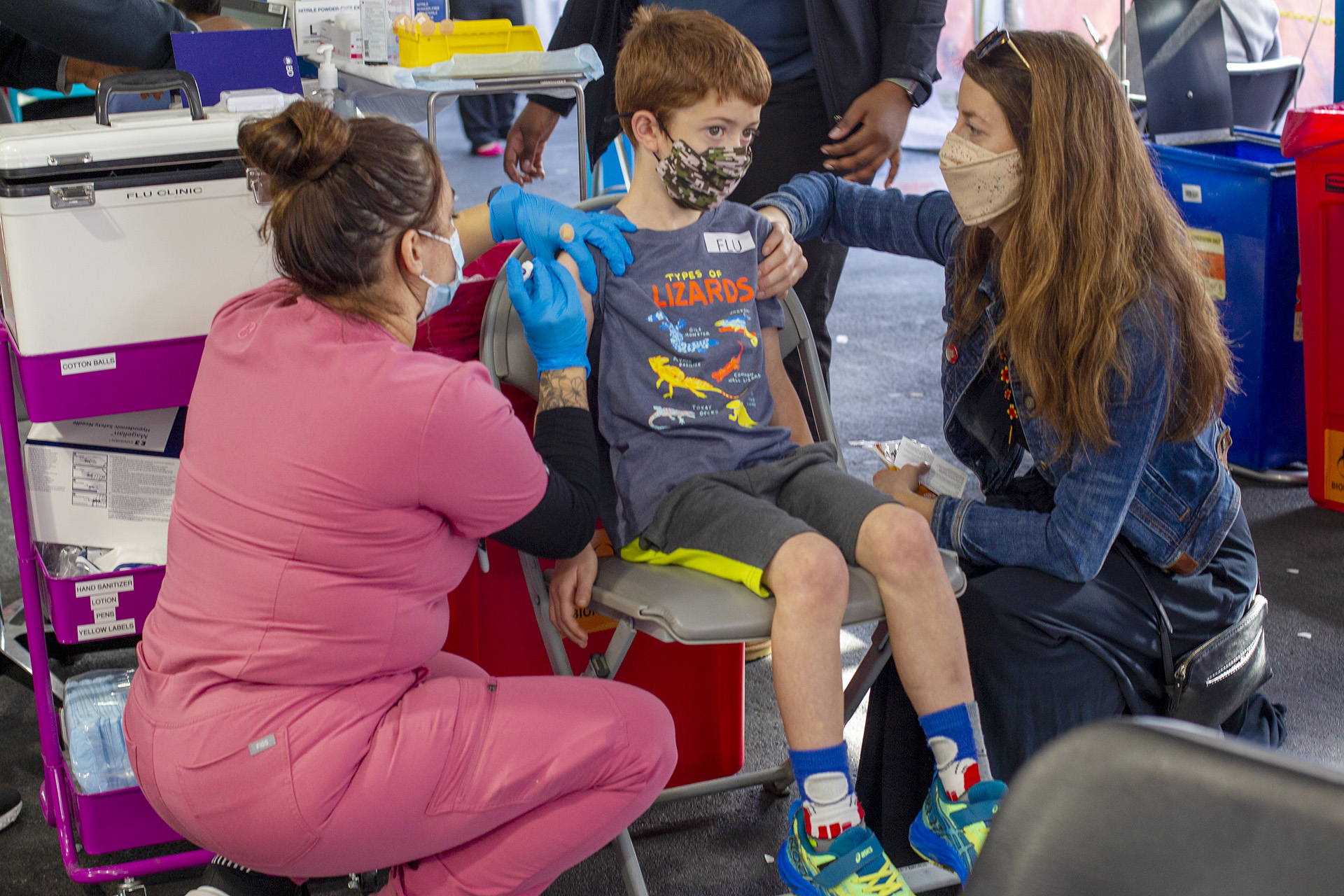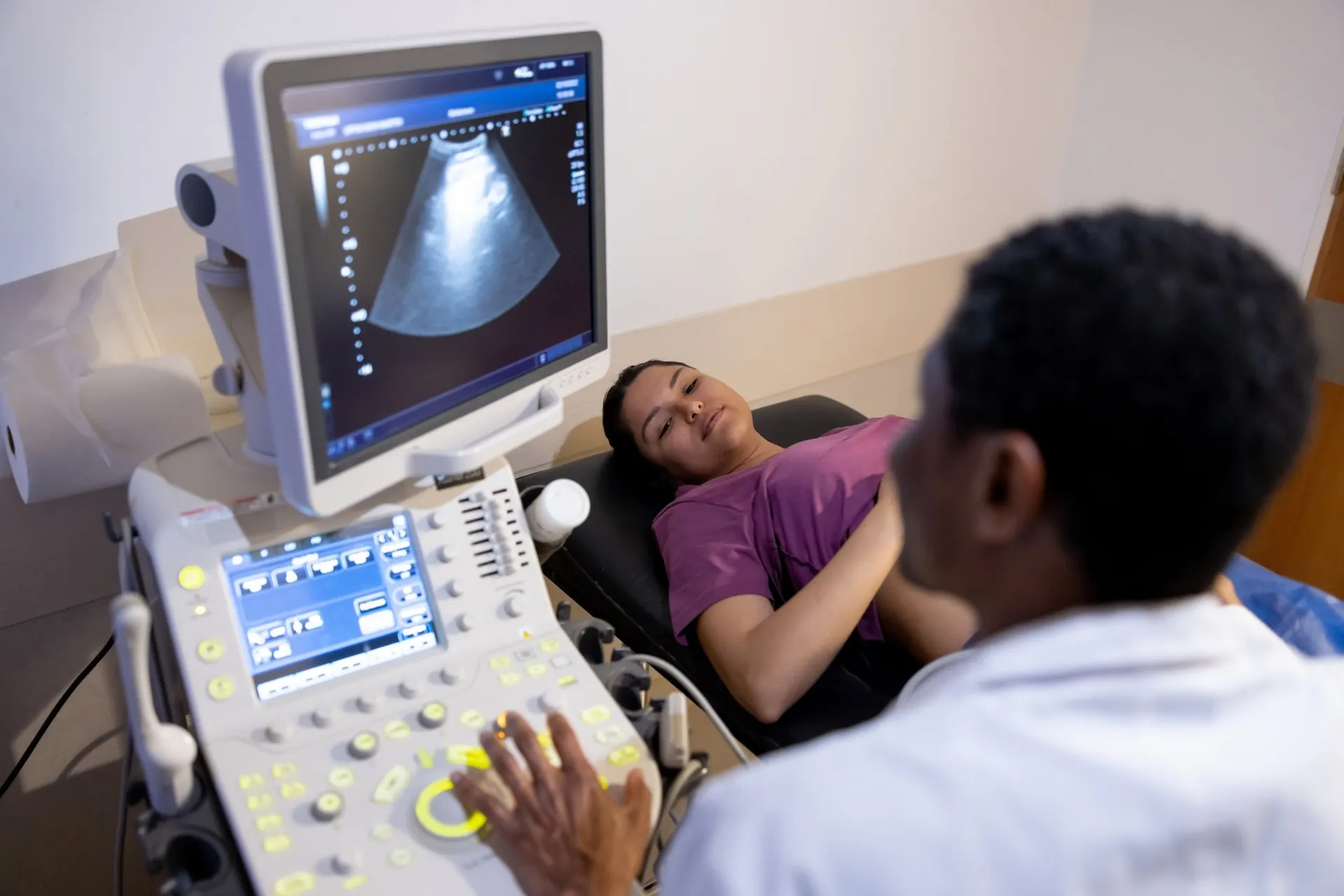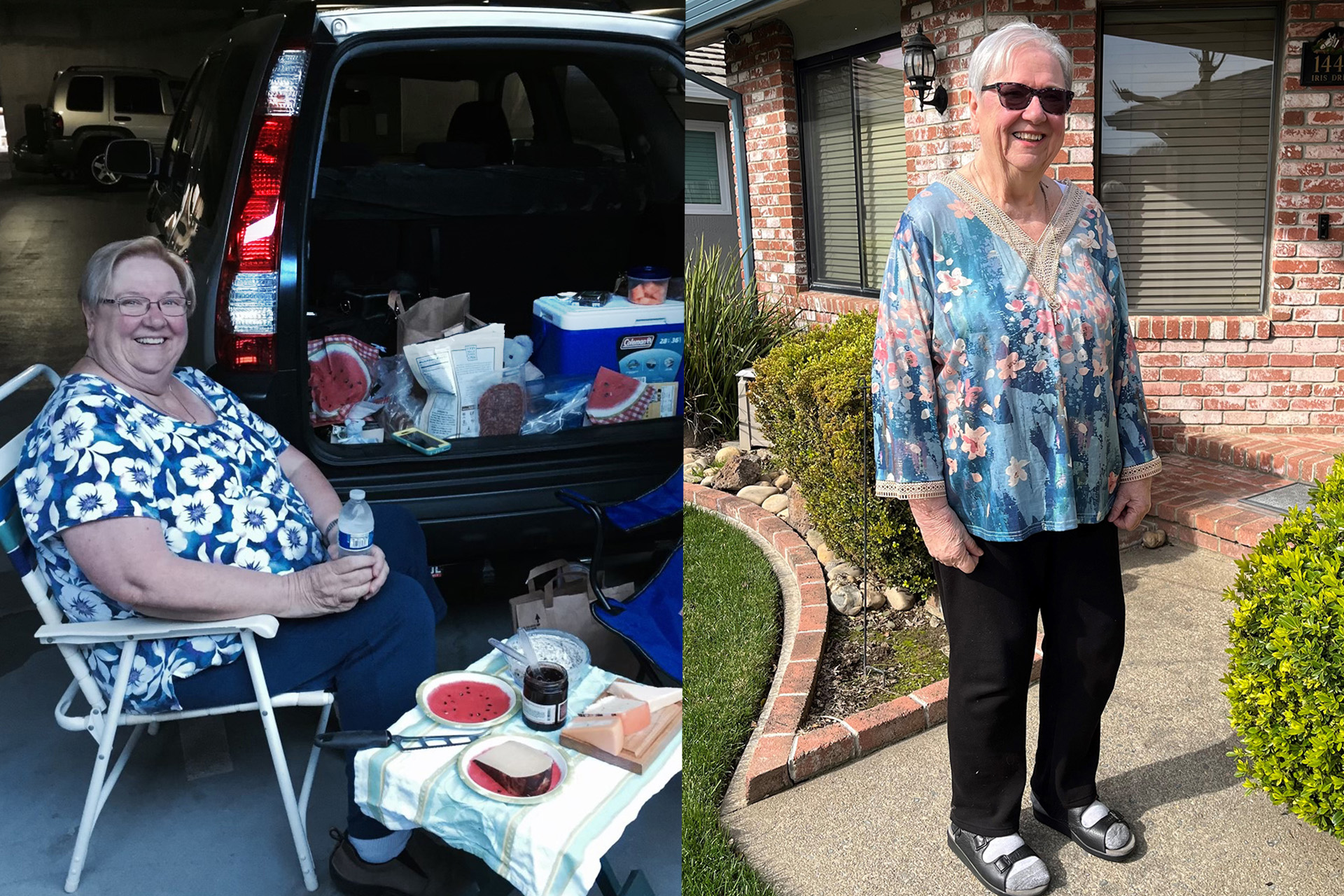A polio disaster declaration in the state of New York has underscored the need for parents nationwide to complete childhood immunizations they may have put off over the last 2 years.
The polio virus can permanently paralyze or be fatal to unvaccinated people.
Kaiser Permanente pediatricians across Northern California are contacting parents of children who are behind on their scheduled immunizations with phone calls, emails, and letters to schedule appointments, said Kaiser Permanente South Sacramento pediatrician Nicole Makram, MD.
“In South Sacramento, we are calling twice each month and sending a secure email message,” said Dr. Makram. “If they don’t respond after that, they receive a letter.”

Immunization rates for some 14 vaccine-preventable diseases, including for polio, dropped nationwide beginning in 2020. In California, for example, the number of shots given to those under age 18 dropped by more than 40% in April of 2020 compared to the year before. In that same school year, the rate of kindergartners completing required vaccinations dropped below 90% in 8 Northern California counties, according to the state health department.
“Those rates will result in us redoubling our efforts,” said Darvin Scott Smith, MD, Kaiser Permanente’s clinical vaccine lead for Northern California.
In New York, where a 24-year-old unvaccinated man was paralyzed by the polio virus and where wastewater testing determined the virus is circulating in several nearby counties, public health officials are imploring people to get vaccinated.
“Polio in New York today is an imminent threat to all adults and children who are unvaccinated or not up to date with their polio immunizations,” said state Health Commissioner Dr. Mary T. Bassett in a press release.
In California, the threat is not as dire, but under-vaccinated people are still at risk, said Dr. Smith.
“In California the same caution applies to under-vaccinated communities, but we’re in a better place because there is no polio circulating,” he said. “However, I do worry about those communities because they are susceptible if it circulates, or if they are exposed.”
Before a polio vaccine became available in 1955, tens of thousands of people in the United States were paralyzed each year from the virus, according to the Centers for Disease Control and Prevention. In addition to polio, unvaccinated kids are vulnerable to preventable diseases such as measles and whooping cough, said Dr. Makram.
During the COVID-19 pandemic, many parents were unable to get their kids to doctor’s offices to receive vaccinations. On top of that, getting vaccinated became politicized.
“The pandemic threw people off, and they didn’t know what to believe, so some just shut down and decided not to get any vaccines at all,” said Dr. Makram. “It’s unfortunate because those decisions are not based on science. They are based on fear, and sometimes reinforced by social circles.”
Dr. Makram said she meets with new pediatricians in South Sacramento on how to talk to parents about vaccines.
“We try to find common ground with parents. I tell them I vaccinate my kids and it’s the right thing to do,” said Dr. Makram. “We use positive words, form common bonds, and create natural assumptions that it’s what everybody does to keep their kids healthy.”
Vaccines are designed to be given at specific times in a child’s life and at specific intervals to provide the maximum protection against preventable diseases, she said. By age 2, children should have received vaccines for about 13 preventable but serious diseases.
“Vaccines done on time protect a child when they are most vulnerable,” said Dr. Makram. “Waiting or delaying the vaccines is a bit like waiting to put the seatbelt on your child until after you have already arrived at the destination — any delay means time when a child is vulnerable.”





This Post Has 0 Comments